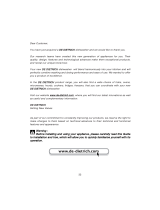
Unless the change affects
the duration of the wash
programme or involves the
time delay option. In this
case, press the ON/OFF
button ( ) to make any
changes.
Button: Time delay
This makes it possible to
delay the start of the wash
programme. Some models
can delay the wash 3, 6 or
9 hours. In this case, when
you press the time delay
button, a pilot light comes
on to indicate the chosen
option.
On other models, it is
possible to select the time
you wish to delay the wash
from 1 to 19 hours, at hourly
intervals. This is ideal for
cheap rate periods. On
these models, when you
press the time delay button,
the display shows the
number of hours you wish
to delay the start of the
wash.
Wash functions must always be selected after the wash programme has been selected. If the
programme is changed during the selection, the previously selected functions
are cancelled.
These functions make it possible to adjust the wash load, times and consumption to a maximum.
The additional functions available depend on the model:
Button: Half-load
This washes half a load
in the top rack only. Valid
for all programmes.
4
SELECTING ADDITIONAL FUNCTIONS
When the dishwasher is
in operation and…
- You wish to put another
utensil in the dishwasher.
- You wish to change the
wash programme.
When you have selected the wash programme and the additional functions, close the dishwasher
door and it will start up automatically.
5
START-UP
IMPORTANTE
If you change the programme or press the ON/OFF button
while selecting the additional functions, all the functions selected
are cancelled.
NOTE: For safety reasons
the programme will restart
after a few seconds.
1. Open the dishwasher door.
2. Put the utensil in the
dishwasher and/or change
the wash programme.
3. Close the dishwasher door.
PROG
Button: Top/bottom
load (Duo-Zone)
Only half the dishwasher
capacity is used. Top
load, in the top rack, for
more delicate utensils,
and Bottom load, in the
bottom rack, for
saucepans or very dirty
utensils. Valid for all
programmes.

























